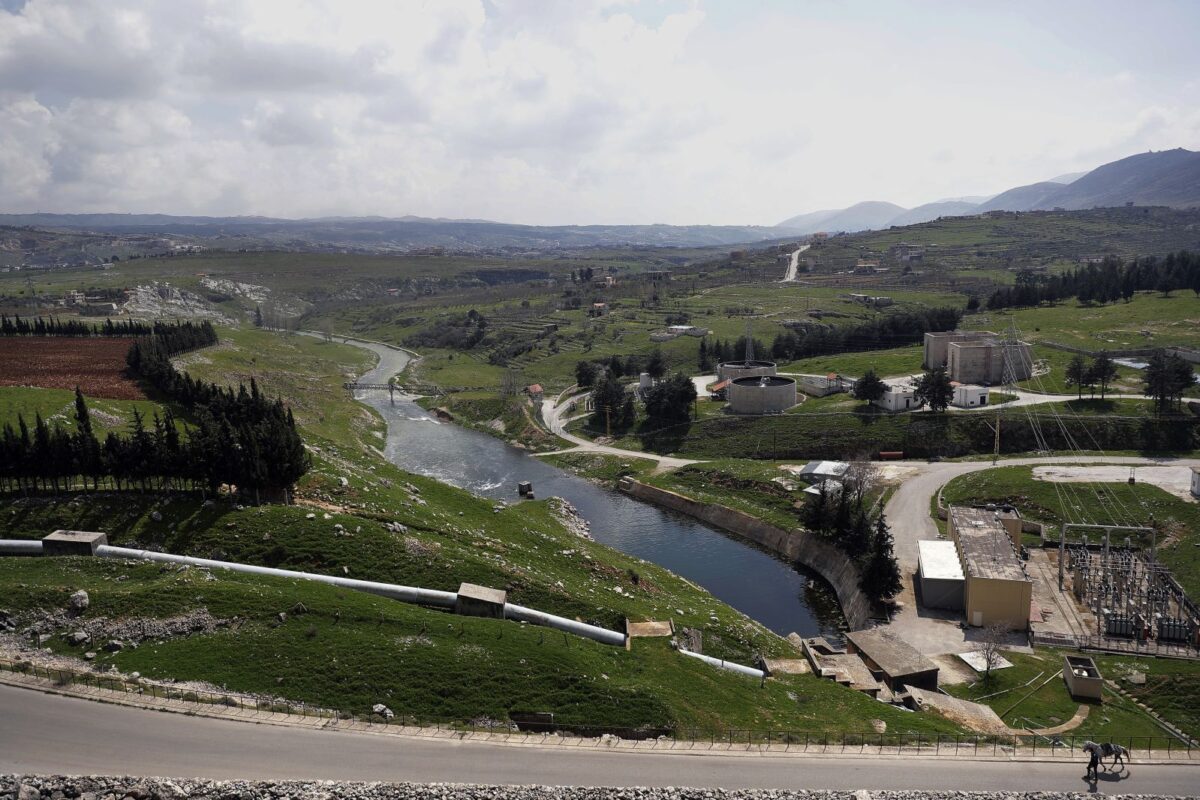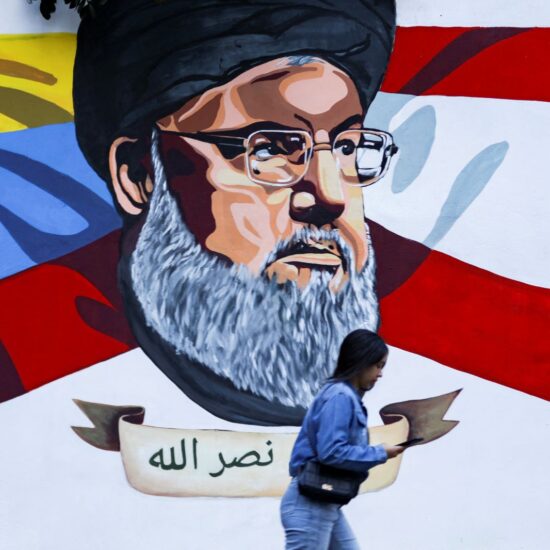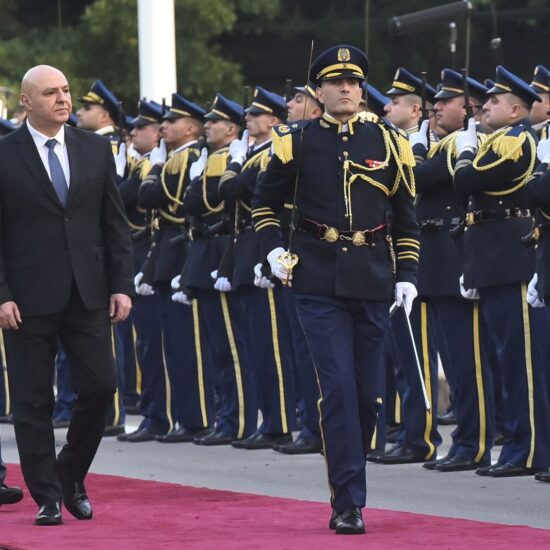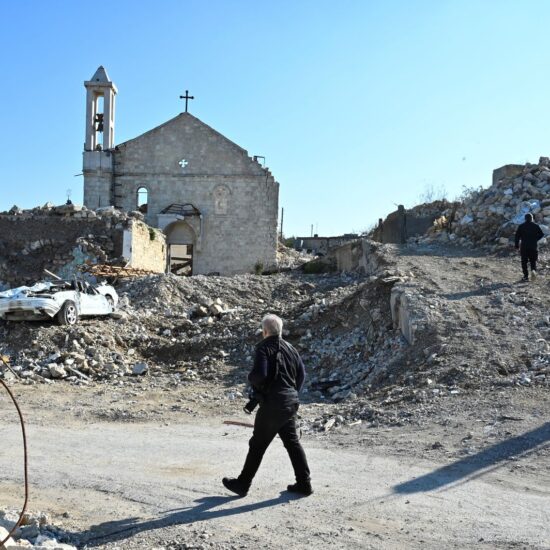
In Lebanon water resources are so scarce that water for farms, industry and households is strictly rationed. People are having to navigate ways to reduce water losses, improve service efficiency, lower costs and enhance the water system’s resilience.
Several rivers across Lebanon have experienced severe drought, marking the worst water shortage in 65 years.
Water levels in Lebanon’s Litani River, the country’s largest reservoir, have fallen to historic lows, threatening agriculture, electricity production and domestic water supplies.
Shebli Abou Ghaida, a farmer in Hasbaya was waiting for warm weather to harvest his crops. But this year, loading is a real disaster when the Hasbani River, which farmers rely on, dried up their lands, suffocated crops, with the production cycle of their agriculture overall being heavily disrupted.
“I’ve been farming this land for over 30 years, and I’ve never seen anything like this,” says Shebli to NOW. “The Hasbani River used to be our lifeline. Every season, we counted on its water to irrigate our fields,” He added.
Shebli says he lost nearly 70 per cent of his crops this season. “That’s not just a loss of income, that’s months of hard work gone.”
Drought crisis
Observers have linked the drying up of the rivers to Lebanon’s overall state of drought, caused by significant decline in rainfall and snowfall. This crisis is further exacerbated by the absence of sustainable water management strategies, the reckless over-extraction of groundwater, and the mounting effects of climate change.
Water shortage
According to the 2025 annual report issued by the Litani River Authority which oversees Lebanon’s largest river and operates under the Ministry of Energy, the country’s water deficit is worsening each year. This growing shortage is largely due to the lack of projects aimed at developing water resources and protecting their quality.
Lebanon’s largest lake, Lake Qaraoun, is facing a dramatic drop in water levels, reaching its lowest point since the dam was built in 1959. The Litani River Authority reports that the lake’s waster storage has declined to record lows, raising serious concerns about the country’s water future.
According to the report, the amount of water flowing from the Litani River into Lake Qaraoun dropped sharply in 2025, reaching only 43 million cubic meters, compared to previous minimum of 63 million cubic meters.
This severe decline caused the shutdown of the Abdul Aal Hydroelectric power plant, which depends on water from Lake Qaraoun to generate electricity, as announced earlier by the Ministry of Energy.
Alarming situation
The drying up of the Anjar River in Eastern Lebanon’s Bekaa Valley is a clear indication of how serious the country’s water crisis has become.
The Anjar River, which used to play a key role in supplying water to the region near the Syrian border, has now completely dried up. This is caused by a combination of factors, most notably the sharp decline in rainfall, the overuse of groundwater, and the lack of proper planning to manage the country’s water resources.
A few weeks ago an irrigation pond in Shebaa turned red after Israelis threw something in it. The Lebanese government tested the water and state that found it now contains dangerous germs and pollutants, making it unfit for use, whether for irrigating crops or water livestock.
Lebanon’s Agriculture Ministry confirmed Shebaa’s Janaam Pond is contaminated with harmful chemicals dumped by Israeli forces.
An additional challenge; A climate crisis
The sharp decline in rainfall has coincided with record-high temperatures during spring and early summer, accelerating the evaporation of available water resources and reducing the soil’s ability to retain moisture.
In key agriculture regions such as the Bekaa, Akkad and the South, drought has become an undeniable reality, with once-green fields are now at risk of turning into dry land.
Recent aerial images reveal a worrying decrease in cultivated areas compared to last year, alongside a significant drop in water levels in agricultural ponds and wells.
Lebanese agriculture threatened
Lebanon’s agriculture sector which contributes around 5 per cent of the country’s GDP and provides jobs for nearly 15 per cent of the workforce, is now facing a severe, multi-layered crisis.
On top of the water shortages, farmers are burdened by a more than 300 per cent rise in the cost of agricultural supplies over the past two years, a staggering 500 per cent increase in fuel prices needed to operate irrigation pumps and total lack of funding and government support.
According to Ibrahim Al-Tarshishi, head of the Farmer’s Association in the Bekaa region, the governments neglect of this disaster puts their livelihoods and harvests at great risk. They hope for government intervention to save them, similar to how other countries support their farmers to help them overcome a certain crisis.
They also wish for the reopening of transit routes with Gulf countries, which serve as vital markets for their produce.
Al-Tarshishi explained that the cost of irrigation used to be about 7 per cent of total production expenses, but this year it has soared to over 30 per cent.
This sharp increase caused large parts of the crops ton die, while the rest of the harvest was produced mid-season at very high costs and sold for only half of the production expenses.
According to Al-Tarshishi, because the season is almost over and farmers are preparing for the next one, many will reduce the size of the areas they plant, especially those that need irrigation and instead focus on watering fruits trees, which are more valuable.
Dangerous solutions
According to a report by the Food and Agriculture Organization (FAO), the use of untreated water for irrigation in some Bekaa villages has risen by 25 per cent in recent months.
This dangerous practice risks the spread of serious diseases such as salmonella and E Coli, while also increasing the levels of heavy metals in soil and crops.
This also poses a direct threat to public health and could jeopardize Lebanon’s ability to export agricultural products, a crucial source of income for the many.
Rodayna Raydan is a Lebanese-British journalist. You can follow her on Twitter @Rodayna_462
The views in this story reflect those of the author alone and do not necessarily reflect the beliefs of NOW.








